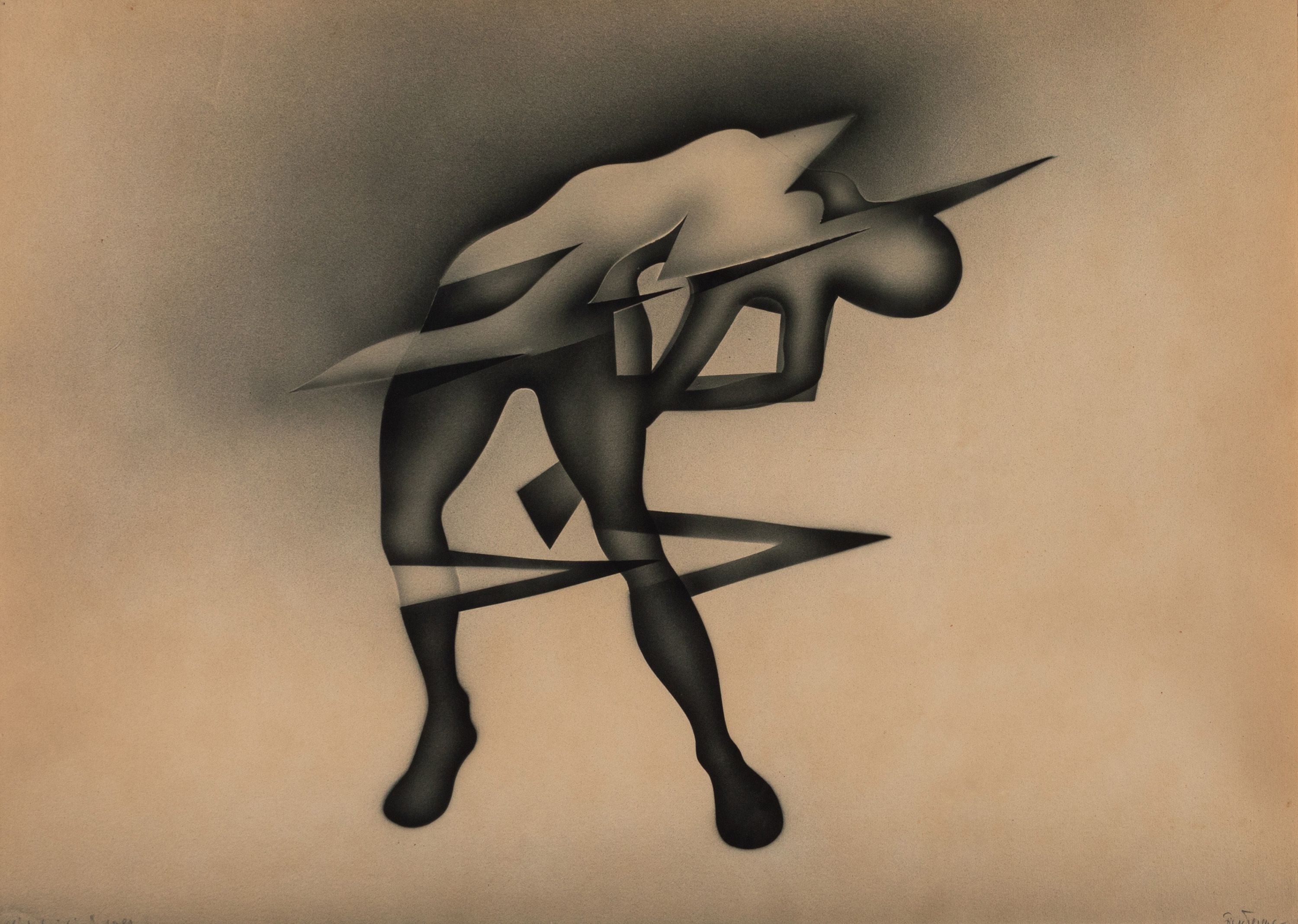Ferenc Ficzek
Slicing Spheres
| Venue: | acb Gallery |
| Date: | Apr 19 – Jun 15, 2018 |
Description
acb presents the second solo show of Ferenc Ficzek (1947-1987), which continues its series focusing on underexposed practices of the Hungarian neo-avant-garde generation. This exhibition concentrates on the artist’s early geometric experimentations, which resulted in substantial corpus of graphical works, paintings and enamel pieces. It is under painter and teacher Ferenc Lantos’ visual guidance and media influence that Ficzek primarily studied the possibilities offered by representation and spatial construction in the pieces he realized between 1968 and 1970. The process of reduction and abstraction of natural motives to basic geometric forms such as circle and square that the old master developed into a consequent visual program, served as a solid ground for Ficzek to build upon, an quickly shift from two-dimensional representation of flat forms to three-dimensional thinking, from circle to sphere and from plan to volume and space.
In his first explorations of the motif, Ficzek would place neon grids, geometric elements, perforated sheets as well as metalworking items on paper or cardboard, then spray them repeatedly with printing ink, while rearranging them on the working surface during the process. The resulting montage-like, usually black and white graphic works obtained by overlapping layers of negative prints announced a constructivist geometrical period and unfolded into compositions in colour where the motif of the sphere – plain or cut horizontally in two – accompanied by architectural elements generated a slightly surrealistic spatial effect. Ficzek then gradually cleared the composition and reduced the ‘surroundings’ into a neutral, empty background that allowed him to isolate the sphere and to study its structural properties through its sections.
In the last pieces of Ficzek’s early geometric period, spheres cut in two, four or more vertical slices consequently became the object of a dynamic structural examination. The slices, always juxtaposed, sometimes sliding vertically along each other, appeared both as phases of rotation and growth of the motif, and therefore create the illusion of movement and depth. The technique of spraying, characteristic of Ficzek’s practice, enhances the impression of mass and volume through darker and lighter areas, and announces the artist’s interest and future use of light and projected shadow. Not only do these pieces evoke Moholy-Nagy’s constructivist spatial approach and Vasarely’s Op-art effects, but also mark the starting point of a longer line of thought. From the beginning of the seventies, Ficzek develops this examination in two directions, when first seriality, then movement and its phases become central to his conceptual photo series.
The more obvious translation of this first approach to seriality in Ficzek’s photographic work occurred in his studies of simple, everyday objects such as a stool, a chair, a table or a door, in which the artist replaced paint and ink with light and shadow. He then integrated movement through juxtaposition or even superposition of its phases in his series dedicated to a dancing female body. This led him to the moving image, with his animation entitled Exits Left Behind (1981) which acts as a conclusion to all the experiments he initiated with and rooted in his early spherical series.
The exhibition opens in the frame of Budapest Art Week.
The exhibition is supported by NKA

